| India-UAE Bilateral Investment Treaty | Recently, India and the UAE discussed a bilateral investment treaty that could see the UAE invest in India’s renewable energy, health, semiconductor and asset monetization sectors.
|
| Nobel Prize Literature 2023
|
The Nobel Prize in Literature for 2023 has been awarded to the Norwegian author Jon Fosse.
|
| Sammakka and Sarakka | The Union cabinet approved a tribal university for Telangana – the Sarakka Central Tribal University, which will come up in Mulugu district.
|
| Shri Ramalinga Swamy
|
PM addresses on the occasion of the 200th birth anniversary of Shri Ramalinga Swamy.
About:
|
| Chhatrapati Shivaji’s Wagh-Nakh
|
The Maharashtra Government signed a memorandum of understanding (MoU) with the Victoria and Albert Museum in London to bring back Chhatrapati Shivaji Maharaj’s legendary “Wagh-Nakh”.
What is the Wagh-Nakh?
|
| Pakistan Occupied Kashmir (PoK)
|
India ‘Raised Concerns’ About Another Trip by US Ambassador in Pakistan to Gilgit Baltistan and called for respecting the sovereignty and territorial integrity of the country.
|
| New Drone (Amendment) Rules 2023 for drone pilots |
|
News Source: The Hindu

News Source: PIB
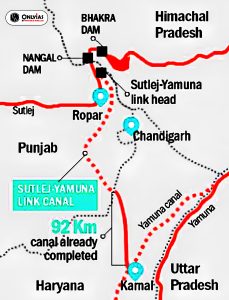
Timeline of SYL Canal Dispute
Punjab Government’s Stand on SYL Canal
Haryana Government’s Stand on SYL Canal
Source: The Hindu
| Relevancy for Prelims: UNFPA (United Nations Population Fund) India, India Ageing Report 2023, Atal Vayo Abhyuday Yojnaa, Rashtriya Vayoshri Yojana, Vayoshreshtha Sammans, and Indira Gandhi National Old Age Pension Scheme (IGNOAPS).
Relevancy for Mains: UNFPA-India and International Institute for Population Sciences (IIPS) released the India Ageing Report 2023, and legislations and schemes related to older persons in India. |
|---|
United Nations Population Fund(UNFPA)
Longitudinal Ageing Study in India (LASI):
|
|---|
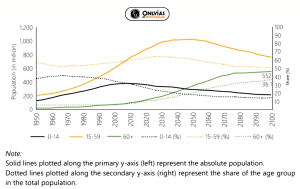 Four years before 2050, the population size of the elderly in India will be higher than the population size of children aged 0–14 years (Figure 2.3).
Four years before 2050, the population size of the elderly in India will be higher than the population size of children aged 0–14 years (Figure 2.3). 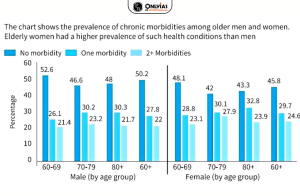
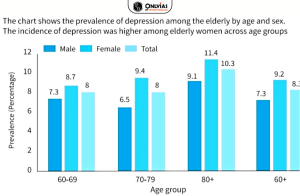
Learn more about: National Social Assistance Programme (NSAP)
International Policy Frameworks on Ageing
|
|---|
| Attempt the PY Prelims Question
The idea of a ‘Welfare State’ in the Indian Constitution is enshrined in its (2015)
Ans: B |
|---|
| Attempt the Mains Question: The performance of welfare schemes that are implemented for vulnerable sections is not so effective due to the absence of their awareness and active involvement at all stages of the policy process. Discuss (GS Paper 2; UPSC Mains 2019) |
|---|
| Relevancy for Prelims: OTT Platforms, OTT services, Ministry of Information and Broadcasting (MIB) and TRAI.
Relevancy for Mains: Regulations on OTT Platforms, Indian Telecommunication Bill, 2022, and Conflict Between TSPs and OTTs. |
|---|
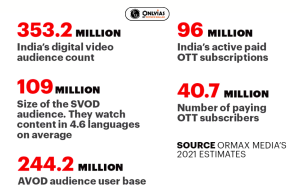
| Pros | Cons |
|
|
ALSO READ: INFORMATION TECHNOLOGY
Demand from Telecom Service Providers (TSPs):
|
|---|
The evolving landscape of OTT platforms in India necessitates a balanced regulatory approach, addressing the concerns of telecom operators while safeguarding media freedom. The proposed hybrid governance model and the draft Indian Telecommunication Bill, 2022, reflect ongoing efforts to establish a comprehensive framework for the regulation of OTT communication services, ensuring fair contributions and licensing parity with traditional telecom services.
| Attempt the PY Prelims Question
In India, which of the following reviews the independent regulators in sectors like telecommunications, insurance, electricity, etc.? (2019)
Select the correct answer using the code given below.
Ans: A |
|---|
| Attempt the Mains Question: Discuss the issues related to OTT platforms regulation in India. What are the salient features of the Draft Indian Telecommunication Bill 2022? (250 words, 15 Marks) |
|---|
SC Verdict on Newsclick Shows Adherence to Due Pro...
Stay Invested: On Chabahar and India-Iran Relation...
Credit Rating Agencies, Impact on India’s De...
Catapulting Indian Biopharma Industry
Globalisation Under Threat, US Import Tariffs Have...
Global Report on Hypertension, Global Insights and...
<div class="new-fform">
</div>
